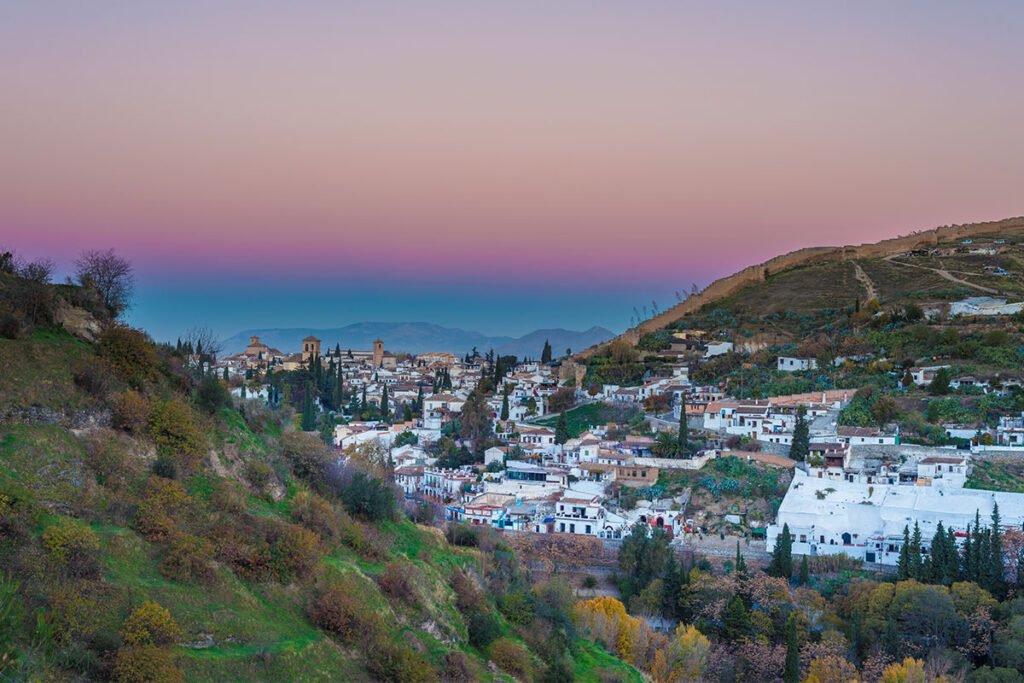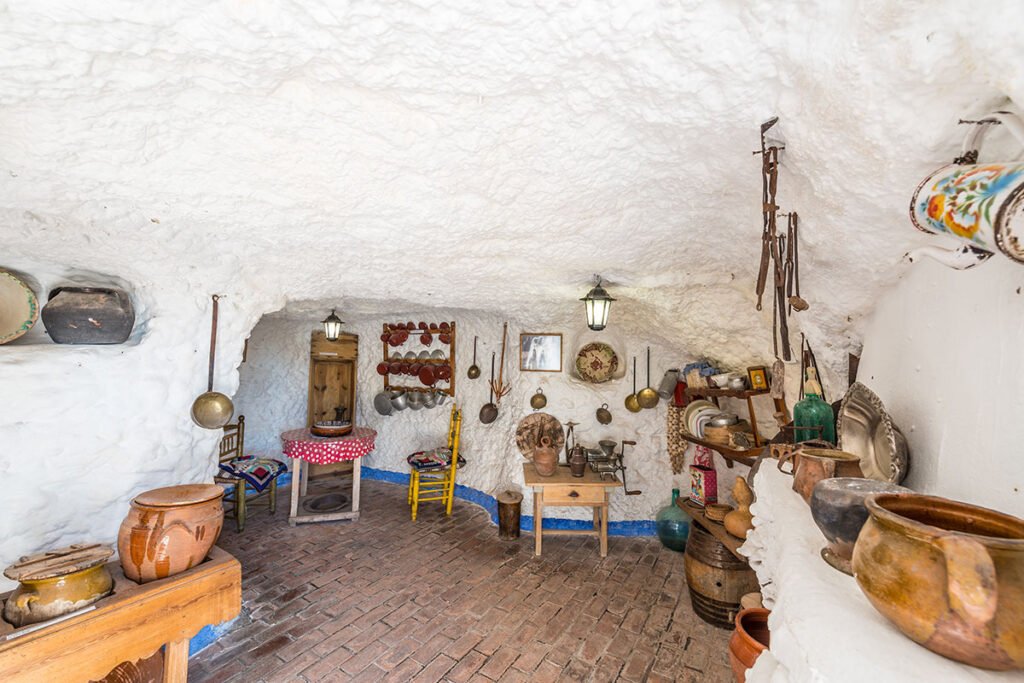Bathed in sunshine, Granada is on the list of dream destinations for many travelers. Let me introduce you to a somewhat forgotten area of this Andalusian city, whose extraordinary history and picturesque location make it worth visiting.
Sacromonte, or “Holy Mount”, is a district located in the east of Granada. At the turn of the 15th and 16th centuries, it became a haven for exiles who, in unfavorable circumstances, made it their home. From there you can see perfectly the pearl in the crown of the city – the Alhambra – a symbol of the power of the Arab rulers who once ruled Al-Andalus. This legendary palace complex (located within a kilometer) reigns in popularity rankings among visitors to Andalusia, but let me invite you to discover equally important, and somewhat hidden treasures of Granada.
WORTH TO KNOW: Granada is the Spanish-language name of this Andalusian city, which we will find on local websites, maps or in tourist guides. Grenada is nothing more than a Polonized version. Which one to use? I am in a hurry with the information that both variants are acceptable in Polish and can be used interchangeably.
The beginnings of the Sacromonte district
One of the most outstanding Spanish poets, from Fuente Vaqueros in the province of Granada – Federico García Lorca perfectly summed up the essence of his small homeland.
I will start this article by paraphrasing the master – “being from Granada in a special way predisposes you to empathy towards those who suffer persecution”. Why do I quote these words? It is these marginalized people who have largely contributed to the creation not only of the cultural heritage of the Sacromonte district, but also of the entire folklore of Andalusia, which I will talk about in a moment.
In the years 1238–1492, Granada was the capital of the emirate of the same name, as well as the seat of Arab rulers. At the same time, the life of ordinary people from the lower social classes took place nearby. With the fall of the Emirate of Granada and the takeover of power by the Catholic kings, the process of forced resettlement of the Muslim, Jewish and Roma people from their previous homes began.
As Granada is located in the Betic Mountains at an altitude of about 700 meters above sea level, the exiles found shelter in nearby caves, where they started life anew.
Sacromonte as one of the cradles of Andalusian folklore
In later times, Sacromonte began to be associated mainly with the Roma, as they constituted the largest percentage of the local population. Their own dialect, called caló, was even developed at that time. Artists inspired by the unique atmosphere of the “Holy Mount” described it in their literary works and immortalized it on canvases. Examples include the aforementioned Federico García Lorca, who was in love with Andalusian folklore, and his poems from “Romancero Gitano”, or José María Rodríguez Acosta and the painting “Gitanos del Sacromonte”, which we can admire in the Queen Sofia Museum in Madrid.
We must not forget about flamenco, which comes from Andalusia, i.e. the art of singing and dancing, which draws handfuls from the mosaic of cultures inhabiting this region. It is undoubtedly one of the most important symbols not only of the native autonomous community, but also of the whole of Spain. Flamenco is based on expressing strong emotions through art, and its beauty can move even the hardest hearts.
WORTH TO KNOW: The history of the “Holy Mount” was marked by suffering. In the 1930s, dark clouds gathered over the entire district, as it was inhabited mainly by ethnic and national minorities, which did not please the regime of General Francisco Franco. As a result of the Spanish Civil War, many of its inhabitants were murdered, and some were sent to prisoner-of-war camps.
Modern caves in Sacromonte
The Sacromonte Caves (Spanish: Cuevas de Sacromonte) should be one of the must-sees when we want to get to know the authentic face of Granada. Some of them are still used as residential houses – their decor and equipment correspond to the economic status of individual residents.
On the other hand, other caves in Sacromonte function as tourist attractions. The local people proudly cultivate the traditions of their ancestors, and thanks to this, we are able to learn about the fascinating cultural heritage of this region of southern Spain.

For example, flamenco shows are held in the caves, during which we can enjoy not only music and dance, but also taste delicious Andalusian cuisine (including Cueva La Rocío, Cueva Zincalé, Cueva Flamenca La Comino – Tablao). Sounds intriguing, doesn’t it?
Sacromonte Caves Museum – a unique ethnographic museum
Speaking of the Sacromonte Caves Museum (Spanish: Museo Cuevas del Sacromonte), it should be noted that we are not dealing here with a typical cultural institution located in one building. It is an open-air ethnographic museum that covers an impressive area of about 10,000 square meters! It is worth knowing that the Sacromonte Caves Museum is also a unique viewpoint, as it offers a spectacular panorama of the Darro River valley and the majestic Alhambra on the Sabika hill.
From there you can see the Darro River valley, as well as the majestic Alhambra on the Sabika hill. Sitting on one of the benches in the open-air museum, we can look at the breathtaking landscapes, where nostalgia and the pain of exiles longing for their homes still linger.

The Sacromonte Caves Museum reflects many aspects of the life of the inhabitants of Sacromonte, so that visitors can get to know the history of this place as much as possible. We will find there, for example, the Flamenco Cave (Spanish: Cueva del Flamenco), the Ceramics and Weaving Cave (Spanish: Cueva Cerámica y Telar), the Blacksmithing Cave (Spanish: Cueva de la Fragua) or the Stable Cave (Spanish: Cueva Cuadra).
The exhibits include, among others, furniture, ceramics, costumes, and other everyday objects. A visit to the Museo Cuevas del Sacromonte will be a wonderful and moving experience, especially if we are interested in the history of those who created the world-famous Andalusian cultural heritage.
WORTH TO KNOW: This unusual cultural institution is located at Barranco de los Negros, s/n (acceder por, C. Verea de Enmedio, 18010 Granada.
